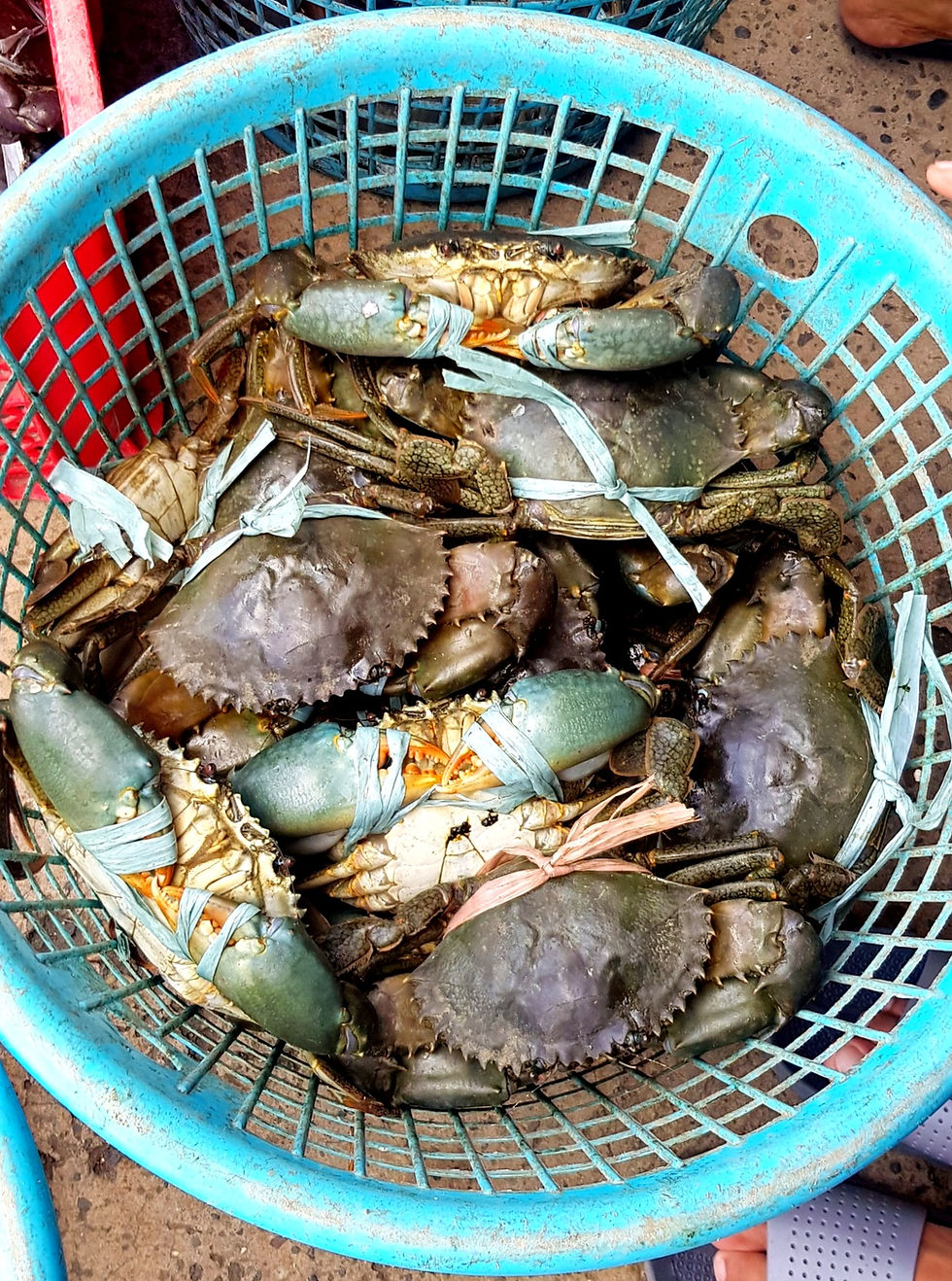Despite the popularity of mud crabs, there remains confusion about the types of mud crabs in the market. The mud crab, or Scylla spp. constitutes of 4 types of species. In this article, we will be sharing some useful information on these different species.

The most well-known species are the Scylla serrata species, which can sometimes also be called the giant mud-crabs or the Sri Lankan crabs. Scylla Serrata is found in Australia, Sri-Lanka, the Philippines, Indonesia. The famous Sri-Lanka mud crabs shown by their blue-ish claws are also known to be Scylla serrata. Please note that using colour as a means of species identification is not recommended for this species. In the Philippines where mud crab aquaculture is widely practised, the species of interests is the Scylla serrata where they are grown bigger than 1kg in size. Bulik is the local name used in the Philippines for the Scylla serrata species. Whereas in Sri Lanka and India, these species are usually harvested from wild fisheries. Scylla serrata is prized for its big size and the sweetness in their meat. Occasionally, it can fetch a premium of 6-7 USD extra for these qualities in regions in Singapore, Hong Kong, and Malaysia compared to the other species of mud crabs. Scylla serrata normally prefers a higher salinity of 18-25 ppt as compared with the other species.
Other popular species are the Scylla olivacea, which are easy to identify from their red-coloured claw. Scylla olivacea is commonly found in Malaysia, Indonesia, Bangladesh, India, and the Philippines. Apart from soft shell crab production where these species are placed in boxes, their usage in the traditional pond culture is limited. This is due to their aggressive nature that tends to burrow into the dikes of the pond, or in some cases destroying some of the boxes used for fattening and soft shell crab. Apart from their behaviour, they do not seem to grow beyond 800 grams. They are usually found in areas with lower salinity, staying in regions as low as 8-15 ppt. However, they are prized for their fullness in their meat which corresponds to higher protein content. Despite tougher and fuller meat texture, they are sometimes traded at a cheaper price (Singapore) compared with Scylla serrata due to their lack of sweetness in the meat. Scylla olivacea harvested from the wild can sometimes have higher mortality due to the supply chain weakness, further compounding the drop in prices. Overall, they are well received in parts of Thailand and Malaysia due to the consumer preference of fullness. In the Philippines, male Scylla olivacea is known as the M2R-M5R (sizes 200-500g), while females are known as the BB crabs.
The third species of interest is the Scylla transquebarica, which are commonly wrongly identified as Scylla serrata. Their claws are usually dark brown or purple (violet) in colour, and can go up to 1kg in size. Scylla transquebarica is commonly found in India, Malaysia, Indonesia, and the Philippines. Similar to the Scylla olivacea, they are commonly farmed for soft shell crab purposes. However, they are not as aggressive as Scylla olivacea. They also prefer a lower salinity range of 10-17ppt. The meat quality of the Scylla transquebarica is not as full as Scylla olivacea, and it does not taste as sweet as Scylla serrata. Overall acceptance of this particular species remains average in the market like Malaysia, Singapore, and Hong Kong. In the Philippines, male Scylla transquebarica is known as the M2V-M5V (sizes 200-500g), while females are known as the BP crabs.
The last species mud crab species is known as Scylla Paramamosain, which is commonly known as the green mud crabs. They are commonly found in Vietnam, Cambodia, China, Malaysia, and Indonesia. In Vietnam, these Scylla Paramamosain is commonly farmed in traditional mud ponds from fly sizes up to 300-400grams. Unlike the Scylla serrata, Scylla Paramamosain can only go up to 600-700 grams. However, they are known to be the least aggressive amongst all the other mud crab species enabling a higher stocking density. The meat texture of the Scylla Paramamosain is usually the softest amongst all species of mud crabs but the sweetness of the meat is present. This species of the Scylla family prefers an environment with a higher salinity of 17-25ppt. Despite their softness in meat quality, they are still able to fetch a decent price due to the Chinese market. Unlike Singapore and the Malaysian market which emphasizes the fullness of claw, the Chinese market places a huge bounty on females with mature ovaries. Making the Scylla Paramamosain an ideal species for the Chinese consumer market. On the other hand, Scylla Paramamosain is not the preferred species for consumers in Malaysia.
Understanding the local consumer demand will help you decide on the feasibility of mud crab farming. With recent developments in technology, hatchery operators can source broodstock from other countries to produce the species needed by your client. However, it might also cause other problems, as more assessment is needed to quantify the risk of introducing a foreign species into the local ecosystem. Identifying the species during the adult stages remains relatively straightforward, but identifying the species in the crablet stage is very challenging. It is not uncommon for pond crablets to buy Scylla serrata crablets, only to harvest Scylla olivacea at the end of the cycle with damaged ponds.

Comments